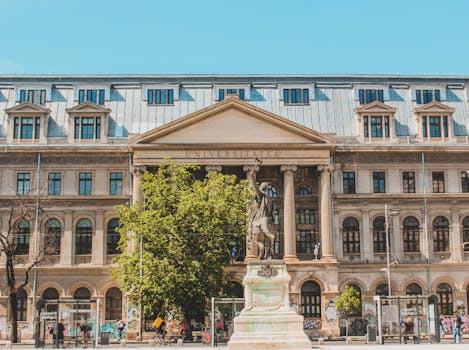
Traveling Through Time: How Europe’s Historical Heritage Shapes Modern Lifestyles in 2025
Traveling Through Time: How Europe’s Historical Heritage Shapes Modern Lifestyles in 2025. Europe, a continent steeped in history and tradition, has a unique ability to blend its past with the present. From the ancient ruins of Rome to the modern skyscrapers of Berlin, Europe’s historical heritage continues to shape modern lifestyles in profound ways. In this article, we will explore the many ways in which Europe’s rich history influences contemporary culture, architecture, art, and cuisine.
Historical Landmarks and Architecture
Europe is home to some of the world’s most iconic historical landmarks, including the Eiffel Tower, the Colosseum, and Big Ben. These structures not only attract millions of tourists each year but also serve as a reminder of the continent’s complex and fascinating history. Many of these landmarks have been beautifully restored and repurposed, now serving as museums, restaurants, and event spaces. For example, the ancient Greek temple of the Parthenon in Athens has been transformed into a museum, showcasing some of the world’s most significant archaeological finds.
Art and Culture
Europe’s historical heritage has also had a profound impact on the continent’s art and culture. From the Renaissance masterpieces of Leonardo da Vinci to the modern street art of Banksy, Europe has always been a hub of creative expression. Many of the continent’s most famous museums, such as the Louvre and the Uffizi Gallery, are housed in historic buildings and showcase an incredible array of artistic treasures. Additionally, Europe’s many festivals and celebrations, such as the Tomatina festival in Spain and the Carnival of Venice, are a testament to the continent’s rich cultural heritage.
Cuisine and Food Culture
European cuisine is renowned for its diversity and richness, with each country boasting its own unique culinary traditions. From the pasta dishes of Italy to the seafood stews of Portugal, European food is a reflection of the continent’s history and cultural exchange. Many of Europe’s most famous dishes, such as pizza and tapas, have been influenced by the continent’s historical heritage, with ingredients and cooking techniques borrowed from ancient civilizations. Additionally, Europe’s many food festivals, such as the Salon du Chocolat in Paris and the Oktoberfest in Munich, celebrate the continent’s love of good food and drink.
Modern Lifestyles and Technology
Despite its rich historical heritage, Europe is also a continent of innovation and progress. Many of the continent’s cities, such as London and Stockholm, are at the forefront of modern technology and design. From the sleek skyscrapers of Frankfurt to the trendy startup scene of Berlin, Europe is a hub of creativity and entrepreneurship. Additionally, the continent’s many universities and research institutions, such as the University of Oxford and the European Organization for Nuclear Research (CERN), are driving innovation and advancement in fields such as science, medicine, and technology.
Conclusion
In conclusion, Europe’s historical heritage continues to shape modern lifestyles in profound ways. From architecture to art and cuisine, the continent’s rich history has left an indelible mark on contemporary culture. As we look to the future, it is clear that Europe’s historical heritage will remain an essential part of its identity, influencing the way we live, work, and interact with one another. Whether you are a history buff, a foodie, or a tech enthusiast, Europe has something to offer, making it a truly unique and fascinating continent to explore.





